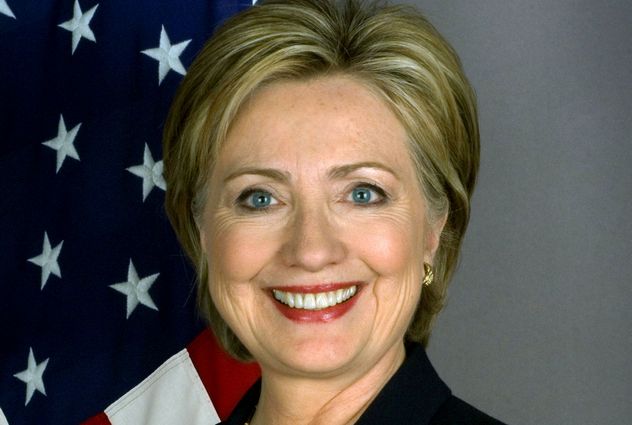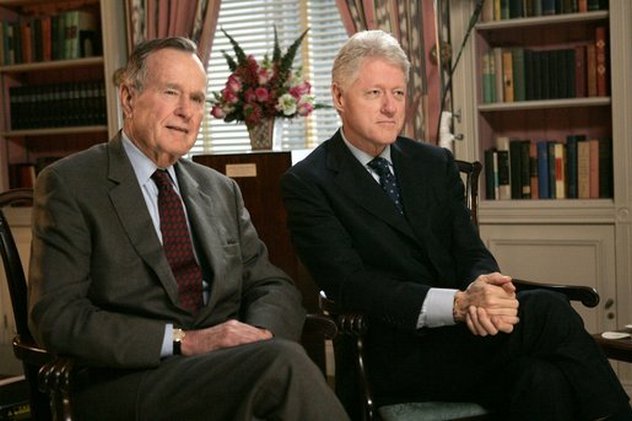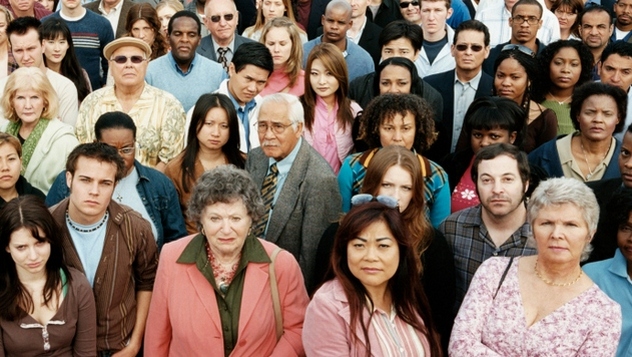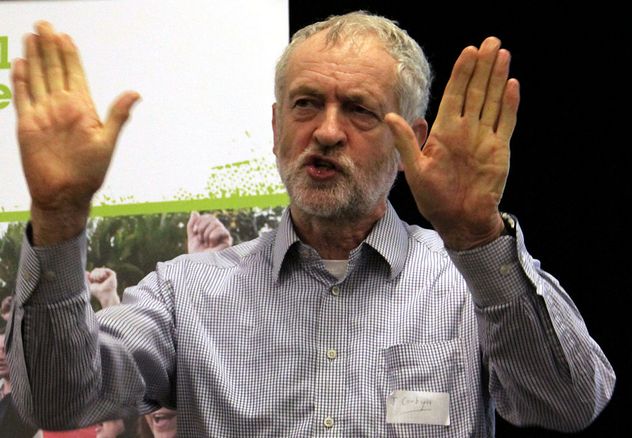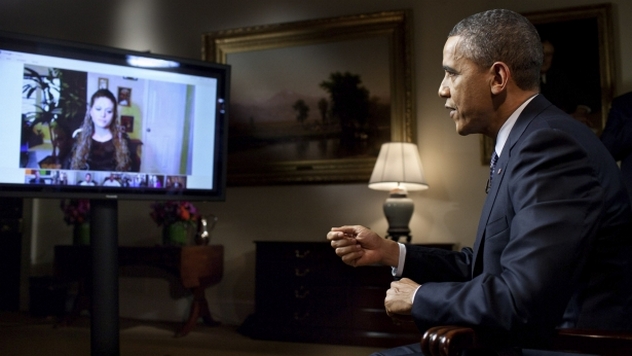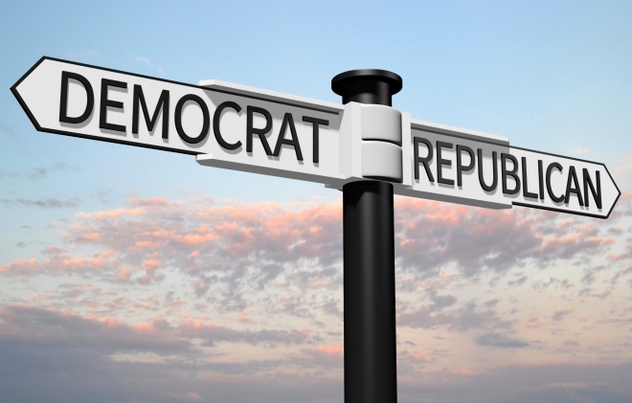A 74-year-old avowed socialist with strong trade union links who wants to raise taxes, Sanders’s resume should be anathema to the American public. Yet his support is skyrocketing. While Hillary Clinton remains the favorite to win the nomination, there are signs that Sanders could be the one leading the Democrats into the next election.
10His Poll Numbers Are Surging
When Sanders joined the race, he was expected to crash and burn. Everyone assumed the nomination was Hillary’s. Early polls indicated she was on course for a victory, and as Trump fragmented the GOP field, she continued to poll around 60 points. Not anymore. In the past couple of months, Sanders’s support has exploded. From less than 10 points in June, he’s leaped to around 35—only seven points behind Hillary. For comparison, Hillary started the summer 60 points ahead of the Vermont senator. At the same time, Hillary’s lead is collapsing in key states. In California, she recently took a sharp tumble, while in Iowa and New Hampshire Sanders is looking increasingly like a potential winner. Most importantly of all, though, polls pitting Democratic candidates against Republicans are starting to swing in Sanders’s favor. NBC has him beating Trump in every swing state, narrowly trailing Jeb Bush in Iowa and tying with him in New Hampshire. Hillary, on the other hand, is so far behind both GOP candidates, she’s barely a speck on the horizon. Obviously, polls are just early predictors and are frequently wrong. But they do reflect the reality of Sanders’s campaigning strengths . . . and Hillary’s weaknesses.
9A Lot Of People Distrust Hillary
Ask people who don’t give a damn about politics to play word association with the name “Hillary Clinton,” and they’ll likely have just one response: emails. This isn’t a supposition. Gallup asked this question in a mid-September poll, and the word “email” drowned out every other reply. Every day, the news reports on stuff like the FBI seizing her online data. Unsurprisingly, this isn’t helping her popularity. Recent polls indicate Hillary’s net favorability isn’t just dropping. It’s sinking like a stone. The way Americans view her is now more negative than at any time during her failed 2008 campaign. At the same time, her predicted share of the vote in Democratic primaries is about to bottom out. She’s losing support in previously solid New York and among female Democrat voters, two segments of the population she should be able to carry. Voters are instead flocking to either Sanders or Joe Biden, possibly suggesting Democrats basically want anyone but Hillary. Some people might argue that the email scandal is wildly overblown and that Hillary’s numbers will soon recover. But the Democratic front-runner is facing other difficulties that won’t go away.
8Voters Are Fed Up With Dynasties
Back in April, former senator Gary Hart made an astute observation. Writing about the possibility of another Clinton vs. Bush presidential race, he opined, “If the presidency were to pass back and forth between two or three families in any Latin American nation we would call it an oligarchy.” His comments cut to the heart of an uncomfortable truth about the 2016 race. Voters from both sides of the spectrum are deeply uneasy about the thought of a second Clinton or a third Bush ascending to the highest office in the land in less than 30 years. It’s also a possibility that almost no one can get excited about. In a deeply scathing article, the New York Times dismissed the idea as a “turgid return to a Bush-Clinton race, with a less adept Bush and Clinton.” Names that electrified grassroots activists in 1992 now seem almost tired. It doesn’t help that even “outsiders” in the field, like Rand Paul, come from political dynasties. This feeling of “been there, done that” helps explain Trump’s meteoric rise to the head of the GOP field. It’s the same for Bernie Sanders’s sudden poll leap. While the two rivals may be poles apart on style, substance, and presentation, they both have the advantage of being true outsiders. For voters looking to rekindle a passion for politics they thought died long ago, nothing could be more attractive.
7Voters Hate The Establishment
It may not quite have entered Washington’s cocoon just yet, but voters are angry. Not just in a mildly irritated sense. Many of them are furious. The causes are manifold. Congress is seen as useless, the government inefficient, and Washington so out of touch it might as well be situated on the Moon. Immigration, bailout packages, and economic inequality have all riled people up from across the political spectrum. In August, the Washington Post went even further, claiming everyday Americans feel the system is rigged against them. Faced with this widespread discontent, politicians can only mouth platitudes. Voters feel utterly ignored. As a result, it can often seem like the United States is being run by a bunch of androids trying to emulate human behaviour. This is where the surge of support for Sanders, Trump, and even Ben Carson comes in. Unlike any of the other candidates, they seem like real people. They say what they think, and they’re not afraid to articulate popular fears. Like Trump on the right, Sanders is an expert at riding this wave (although in a very different way). If it happens to crest at just the right time, it could take him all the way to the top.
6We’ve Already Seen The Same Thing In The UK
As little as five months ago, the correct response to hearing the name “Jeremy Corbyn” was to ask “who?” The British activist and parliamentary backbencher was known mainly for his anti-establishment, hard-left views, and voting against his own Labour party 500 times. Then, over the course of the summer, as Labour was searching for a new leader, he exploded onto the scene. Old-fashioned, unashamedly socialist, shabbily dressed, and politely spoken, he was to British politics what Bernie Sanders is to American. From a starting point of 100:1 odds, Corbyn was swept into power as his party’s new leader with the biggest popular mandate in history. Not unreasonably, Corbyn’s surprise win has made many American commentators wonder if Sanders can pull off the same thing in the US. It would be foolish to overstate the similarities between the two. Corbyn’s Labour party was recovering from a devastating general election defeat, and Sanders is significantly less hard-left than his British counterpart. Nonetheless, Corbyn’s win was part of a wider resurgence of left-wing populism. The SNP in Scotland, Podemos in Spain, and Syriza in Greece have all won striking gains or outright victories on platforms far to the left of center. It could be that Sanders, too, is ideally placed to take advantage of this sudden shift.
5He Has Support From The Young
In 2011, Pew Research released the results of a shocking poll. Among voters under the age of 30, it turned out that more viewed socialism favorably than capitalism (at 49 percent to 46). While it might be tempting to sneer about hipster Millennials, a more intelligent approach would be to wonder why this might be. The answer is that, for many young people, modern American capitalism simply isn’t working. In jobs, debts, and prospects, Millennials still lag behind older generations. This could be one reason why Sanders polls so well among 18- to 29-year-olds. Although Hillary still leads even among this age group, her advantage in recent polls has been shockingly narrow. More importantly, for a generation raised in the weird and wonderful online world, Hillary just doesn’t create the same social media buzz as her rival. Nearly two million people have liked Sanders’s Facebook page (against 1.5 million for Hillary), and Instagram is on the verge of collapsing under the weight of hashtags like #FeelTheBern and #BabesForBernie. More importantly, Sanders also carries the highest level of engagement with his social media posts of any 2016 candidate. That’s not to say all this buzz will translate to Sanders winning the nomination. But it does show his support base is growing rapidly and often in ways you wouldn’t expect.
4He Has Support From Voters Obama Lost
Although he carried two elections, Obama isn’t the most popular guy to ever head his party. States that were once true blue like West Virginia have turned brick red since 2008, with counties delivering every Democrat they can get their hands on a kicking. It sounds like a tough sell for centrist Hillary, let alone a left-wing candidate like Sanders. But the reality on the ground may be very different. There are signs that the states Obama lost could be leaning toward Sanders. In West Virginia, this is thanks to Sanders’s union credentials. In a state with plenty of unionized mine workers, a candidate who has done his time on the picket lines carries some extra weight. When the Washington Post recently canvassed a United Mine Workers of America (UMWA) meeting, they found high support for Sanders’s candidacy—a big surprise since Sanders supported many of Obama’s locally unpopular environmental policies. A Marquette University poll also put Sanders equal with Clinton in Wisconsin, another state where rural white voters abandoned Obama in droves. Sanders is convinced he can make inroads in such places. He’s helped by his relatively (for a Northern Democrat) progun record and support of immigration restrictions to protect American jobs. If he’s able to translate this early, tentative support into a reality, we might just witness the unlikely sight of red states flocking over to a self-proclaimed socialist.
3He Might Have Support From Union Members
In terms of union support, most Democratic candidates aren’t doing particularly well. Many of the larger unions have elected to stay above the fray, while only Clinton seems to be scoring any major union backing. For pro-union Sanders, this could be described as one heck of a blow. But Sanders himself seems unconcerned. According to his campaign, his union support is a lot stronger than anyone realizes. While many union leaders are Hillary fans, Sanders contends the rank and file are more interested in his brand of politics. It’s not an entirely baseless claim. When the teachers union began to lean toward Hillary, educators in Vermont, Wisconsin, Montana, and Massachusetts complained that at least 30,000 of their membership had higher levels of support for Sanders. As we mentioned, there are already signs that UMWA members are swinging toward him. Sanders’s union support may yet become more solid. Only a few days ago, he introduced a stunningly pro-union bill to the Senate that would see workers’ rights drastically expanded. He also has an enviable track record of supporting union activity. Even if he doesn’t get the union leaders on board, Sanders is still hopeful that their members will back him independently.
2He’s Closed The Funding Gap
As someone who wants to get the money out of politics, Sanders should be in a bit of a bind. While his campaign has eschewed big-dollar fundraisers, Hillary has been building a formidable war chest to fight for the nomination. In the second quarter of the year, her campaign commanded nearly $30 million, compared to Sanders’s $12 million. Yet the end of the third quarter brought some unexpected news: Sanders’s campaign had nearly caught up with Hillary’s. Crowdfunded through small donations, Sanders’s campaign has managed to do the seemingly impossible. He’s already netted over one million individual contributions, more than even Obama’s savvy grassroots campaign managed in 2008. In doing so, he’s narrowed Hillary’s funding lead to a mere $2 million. At the same time, most of Hillary’s donors have already given the maximum $2,700. Sanders’s are largely free to donate him more—something that could come in very handy in the future. For an outsider, this is an incredible achievement, and it shows the strength of popular feeling Sanders’s grassroots campaign has generated.
1He’s Already Pulled Hillary To The Left
When all is said and done, Sanders is still a long shot to win. Hillary remains the favorite, and, provided Biden doesn’t split the vote, could yet secure an enormous victory. Sanders isn’t stupid. He knows he’s unlikely to be leading the party into 2016. So why is he running at all? Because he knows that by doing so, he can drag the debate over to the left. A couple of days ago, Hillary formally announced her opposition to the Trans-Pacific Partnership (TPP). A trade deal that would cover over 40 percent of the world’s trade, it has fierce opposition on the left, who see it as an invitation for corporations to move American jobs offshore. Bernie Sanders has repeatedly spoken out against it, while Hillary has voiced unequivocal support for it at least 45 times. No one is in any doubt why she’s chosen now to have a change of heart. Hillary is running scared of Sanders. It’s the same reason she’s now moved massively left on gun control. It’s the one area where Sanders, a senator from a hunting state, can’t outflank her. In the same way that Donald Trump’s comments on immigration have pulled the whole of the GOP field to the right, Sanders is now dragging Hillary leftward. In the end, that may well be enough for him. Although there’s a real chance Sanders can win the nomination, perhaps he doesn’t really need to. For the lifelong outsider, seeing some of his policies enacted even if he’s not the architect could be reward enough.

